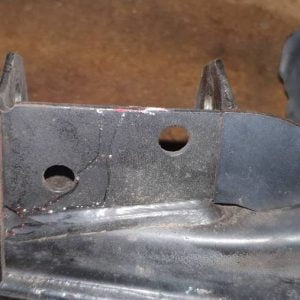Here are the KAZZ Engineering E30/E36 Lower Control Arm Bushings!
This product has been offered since the beginning of KAZZ Engineering but has been iteratively improved over the years to make sure your car is always getting the best!
About the material…
This product is proudly Australian made with our unique D60 polyurethane material. This semi-rigid material has been proven to provide the best durability and performance for your E30/E36! The material properties allow for superior steering response and alignment control while still being able to absorb noises and harshness’ – accommodating for both comfort and performance – this material is the perfect all-rounder! We recommend this material for all road and track applications.
About the options…
Use the drop-down menu to choose what version you would like!
These bushings are offered in two options: Centred or Offset.
About centred lower control arm bushings…
The centred option allows you to retain your cars original suspension geometry while improving steering response and alignment control. Thanks to the polyurethane material – you will experience sharper steering and can have peace of mind knowing that the durable polyurethane material will not wear and perish like the rubber OEM alternative.
***We recommend centred bushings for our Extended KAZZ Engineering Control Arms because these control arms are already designed with +2 degrees of added castor.
About offset lower control arm bushings…
The offset bushings are designed to add castor to your front suspension geometry – just like an M3! The offset bushing will orientate the control arm’s outer ball joint (positioned under your steering knuckle) further forward and thus increases the castor angle of the front strut axis. This also has an effect on camber gain (more castor = more camber from trailing wheel towards steering lock).
Adding castor will improve your car’s steering characteristics and will encourage the front wheels to self-centre. In the case of drifting – you will notice the extra castor will make the car more willing to steer into the slide and then self-steer during transitions which makes your life easier while you’re throwing scandi’ flicks! In the case of circuit racing – you will notice the extra castor will make the car more stable during straight line acceleration but also more willing to return the steering wheel at corner exits, which ultimately means less driver effort and more vehicle control.
***It is important to note that the offset hole should be carefully orientated inside the ‘lollipop’ bracket. When installing, make sure the hole is ‘aligned with and closest to’ the two mounting holes on the bracket.
Install tips…
1) We strongly recommend all products are installed by a qualified mechanic.
2) Assuming you are replacing OEM rubber bushings – the hardest part of the install is removing the old bushings. The best way to remove the old bushings is with a press and a round 59mm press tool. Failing this; you can cut the OEM bushing out. Start by removing the centre and then make a single cut along the inner face of the metal shell and then pry this piece out.
3) The KAZZ Engineering bushings are unique and are designed to be designed easily without the need for any speciality tools. The geometry of the bushings feature a stepped diameter. This means you can easily push the first edge of the bushing inside the housing. This allows you to easily get the bushing orientated and ‘in there’. At this point the diameter is increased for a tight interference fit. You can now press the rest of the bushing into the housing and then fit onto your control arms.
4) We recommend bushing lubricant on the bushing’s inner hole where the control arm is fitted.
5) When re-installing the control arm – be sure to fit the inner ball joint first and then locate the ‘lollipop’ bracket.
6) Aligning the ‘lollipop’ bracket to the chassis’ mounting position is a common struggle for the DIYer. This can be made easier with the help of a narrow screwdriver. With the control arm mounted to the subframe (as per tip 4), fit the screwdriver through one of the holes on the bracket and also into the corresponding mounting hole on the chassis. This will force the correct path for the bracket to follow as you push the bracket towards the chassis. Once you have the counterbored hole of the lollipop bracket over the mounting dowel on the chassis you will be able to thread in the first mounting bolt. Remove the screw driver and install the second mounting bolt. Torque both bolts to 40Nm.










Reviews
There are no reviews yet.